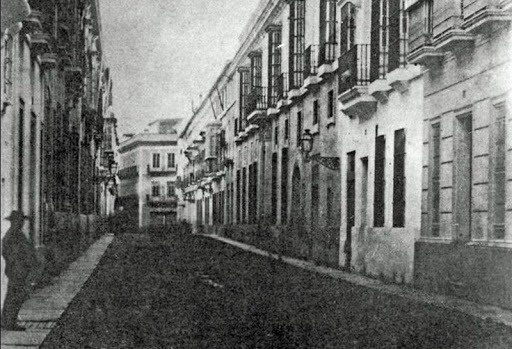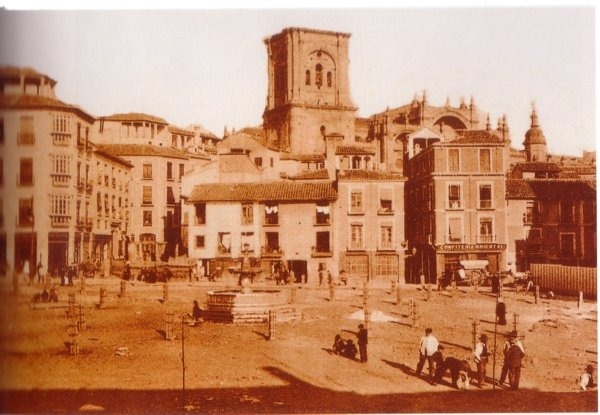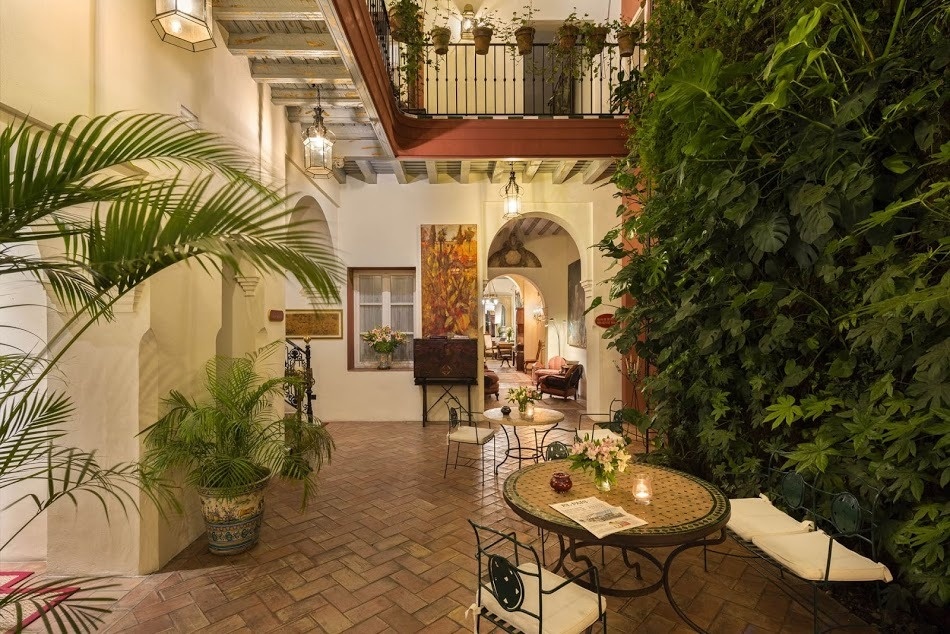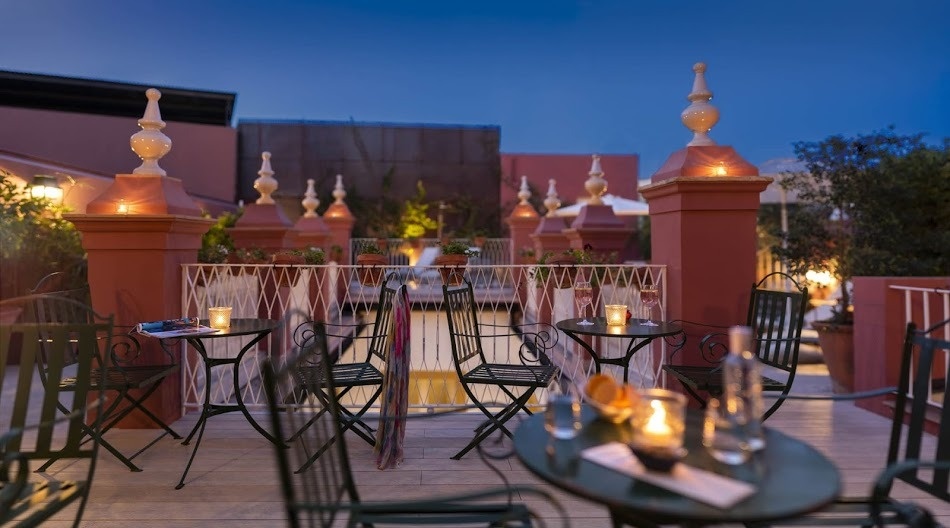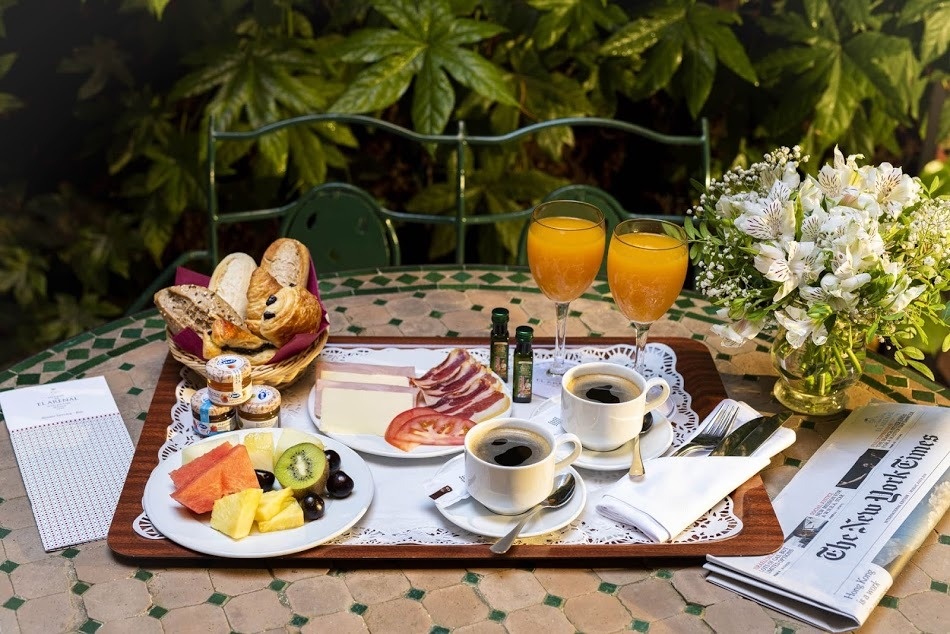Las Casas de El Arenal
In order to achieve this unique hotel, Las Casa de El Arenal, the architect Luís Fernando Gómez-Stern undertook a construction and renovation project on the properties that comprise the hotel, the houses at numbers 14 and 16. Both of these 18th century homes have three floors and a facade marked with pilasters. They were scrupulously renovated, maintaining and respecting all their original construction features through their repair or substitution. With this renovation task, two of the El Arenal district's most notable homes were recovered. They are connected by patios and galleries that create a unique space, and thanks to the renovation works, their Sevillan splendour comes to the fore once more. Their elegant facade hides traditional architecture of high value inside.
The El Arenal district is a throwback to a seafaring, colonial Seville that no longer exists. Large fleets headed for the New World would leave from El Arenal, and it welcomed the fabulous cargoes and treasures that made the city the meeting and refuge point for merchants, rogues and adventurers from around the world.
In this area you can relive the centuries of Seville's glory in the Golden Age, when it was the economic and cultural heart of Spain at its height. The birth of El Arenal is owed, mainly, to the Viking invasion in the 9th century. They reached Seville in the year 844 and they sacked it. The Muslims of Abd ar-Rahman II decided to build walls around the city to prevent future invasions.
Once the defensive wall was constructed, a strip of land near the river remained unprotected and without buildings. Its plot would grow over the centuries into a quiet, different place under the shelter of the docks and all the marine industry Abd ar-Rahman II launched. This humble beginning of El Arenal would result, in time, in a wonderful place in the city of Seville. All the latest goods brought from America would pass through here as well as the large number of ruffians, adventurers and men looking for fortune who built the New World.
In the 13th century, the Torre del Oro, the Torre de la Plata and the Torre de Abdelaziz were built to prevent possible invasions via the Guadalquivir River. Following the reconquering of Seville by Ferdinand III of Castile, an area with privileges and exemptions was created: El Barrio de la Mar. Here, sailors, coopers, basketmakers and cartwrights kept the main activity of the future Seville outside the city: the construction of ships and merchant traffic in the most important and most populous city in Spain. Alfonso X of Castile built the dockyards and centralised the admirality of Castile's fleets here as it was a strategic port where Atlantic and Mediterranean routes merged. This is why the sailors who lived in the La Carretería and La Cestería districts (or the Barrio de la Mar) were northern men, mainly from Santander.
After the Discovery of America, Seville became the port and gateway to the Indies from 1503 onwards, when it enjoyed a monopoly on American commerce. El Arenal was an industrial suburb of Seville; a zone between seafaring and something temporary had grown unexpectedly to one side of the happy, walled Seville, which was then known as the Hispanic Athens. Those cast aside by the peninsula, galley slaves, petty thieves and go-getters fleeing from a tired and poor Castile would flock to the city. Cervantes came to Seville with the hope of being compensated after years of imprisonment and heroism under the Spanish flag.
In the 18th century, under Charles III of Spain, the armoury (Maestranza de Artillería), in addition to the new mint (Casa de la Moneda), was constructed on the old dockyards. The Royal Stables (Real Maestranza de Caballería) was also constructed in order to give free rein to a passion that had gripped Spain since remote Iberian times: bullfighting and the bull.
Over time, Seville's port lost importance. In the 19th century, the wall that separated El Arenal from Seville disappeared and the Paseo Colón was developed thanks to Pastor and Landero. The seafaring tradition of El Arenal slowly dissipated as it became more than an area outside the city limits. The Sal Docks were substituted by the New York Dock and the city underwent successive expansions, such as that undertaken for the Ibero-American Exposition in 1929, which would see the old seafaring suburb move to the south.
It is in this area where Seville also finds a good part of its operatic traditions. Opposite the Mint, near the Avenida de la Constitución, is where tradition situates the house of the Barber of Seville, Figaro. The Bullring, which pertains to the city's stables, is also located here. Scenes of Carmen, La Cigarrera de Sevilla, also take place here. In addition, the Hospital de la Caridad, founded by the venerable Miguel de Mañara, is situated here. It has also seen operas performed in its honour. The district was chosen in the 90s as the site of the Teatro de la Maestranza, which is Seville's opera theatre. The churches located in the vicinity are the Capilla de la Carretería, Capilla del Baratillo, Capilla de la Real Maestranza de Caballería, Iglesia del Hospital de la Caridad, Hermandad del Santísimo Cristo de las Aguas and Capilla de la Concepción, which is next to the Postigo del Aceite.

